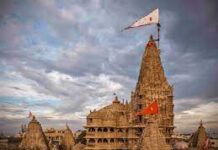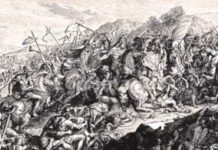All through history, civilizations rise and drop, clearing out their presence in the form of ruins and artifacts. In any case, a few civilizations vanish from authentic records, taking off behind baffling secrets that fascinate the minds of archeologists and students of history. Misplaced cities serve as proof of the impermanence of human endeavors and the tireless passage of time. Luckily, headways in geographic strategies have revolutionized our capacity to rediscover these covered-up civilizations, giving priceless experiences into our past. This exposition investigates the role of geographic methods in rediscovering misplaced cities and understanding the secrets they hold.
Further Detection:
Inaccessible detecting innovations, such as LiDAR (Light Discovery and Extending) and toady symbolism, have revolutionized archeological overviews by permitting analysts to enter thick woodlands, endless deserts, and other blocked-off territories. LiDAR, for example, can make nitty-gritty 3D maps of landscapes, uncovering covered-up structures underneath thick vegetation. This innovation played a vital part in revealing the broad urban scenes of the old Maya civilization concealed underneath the wildernesses of Central America. Fawning symbolism, with its high-resolution capabilities, has encouraged the distinguishing proof of antiquated settlements, burial hills, and indeed already obscure cities, advertising archeologists a bird’s-eye view of the past.
Geographic Data Systems (GIS):
GIS coordinates spatial information with explanatory instruments, empowering analysts to analyze and visualize complex designs inside geological settings. By overlaying information layers such as territory highlights, climate information, and verifiable maps, GIS helps in recognizing potential locales for archeological investigation. It empowers analysts to perceive settlement designs, exchange courses, and natural variables impacting antiquated civilizations. For example, GIS examination has revealed the urban arrangement of antiquated cities like Mohenjo-Daro within the Indus Valley Civilization, uncovering modern water administration frameworks and road formats.
Ground-Entering Radar (GPR):
Ground-penetrating radar could be a non-invasive geophysical strategy utilized to identify subsurface highlights without exhuming. By radiating electromagnetic waves into the ground and measuring the reflections, GPR can recognize buried structures, artifacts, and even whole city formats. This innovation has been instrumental in revealing covered-up chambers, tombs, and urban foundations in archeological destinations around the world. In Egypt, GPR studies have uncovered the presence of potential burial chambers and unfamiliar structures inside the Valley of the Lords, advertising unused roads for investigation and understanding of old Egyptian civilization.
Geoarchaeology:
Geoarchaeology combines geographical and archaeological principles to remake past scenes and human intuition with the environment. By analyzing silt layers, soil composition, and topographical arrangements, geoarchaeologists can gather antiquated land-use designs, rural hones, and common calamities that formed civilizations. This intrigue approach gives a priceless setting for deciphering archeological discoveries and understanding the social elements of misplaced cities. For instance, geoarchaeologists have illustrated the natural debasement that contributed to the decrease of old Mesopotamian cities like Ur and Babylon, highlighting the interconnection of human social orders and their characteristic environments.
Misplaced cities hold a persevering charm, calling us to unravel their mysteries and reveal the stories of bygone civilizations. Geographic methods serve as crucial instruments in this journey for information, permitting us to peer through the cloak of time and rediscover the covered-up chapters of our past. From inaccessible detecting innovations to progressed explanatory strategies, these procedures offer exceptional experiences into the rise, drop, and bequest of misplaced civilizations. As we proceed to saddle the control of geology with archeological inquiry, we edge closer to opening up the insider facts of misplaced cities and picking up a more profound understanding of the wealthy embroidered artwork of human history.
By: Robi’atul Adawiyyah
Write and Win: Participate in Creative writing Contest & International Essay Contest and win fabulous prizes.

















